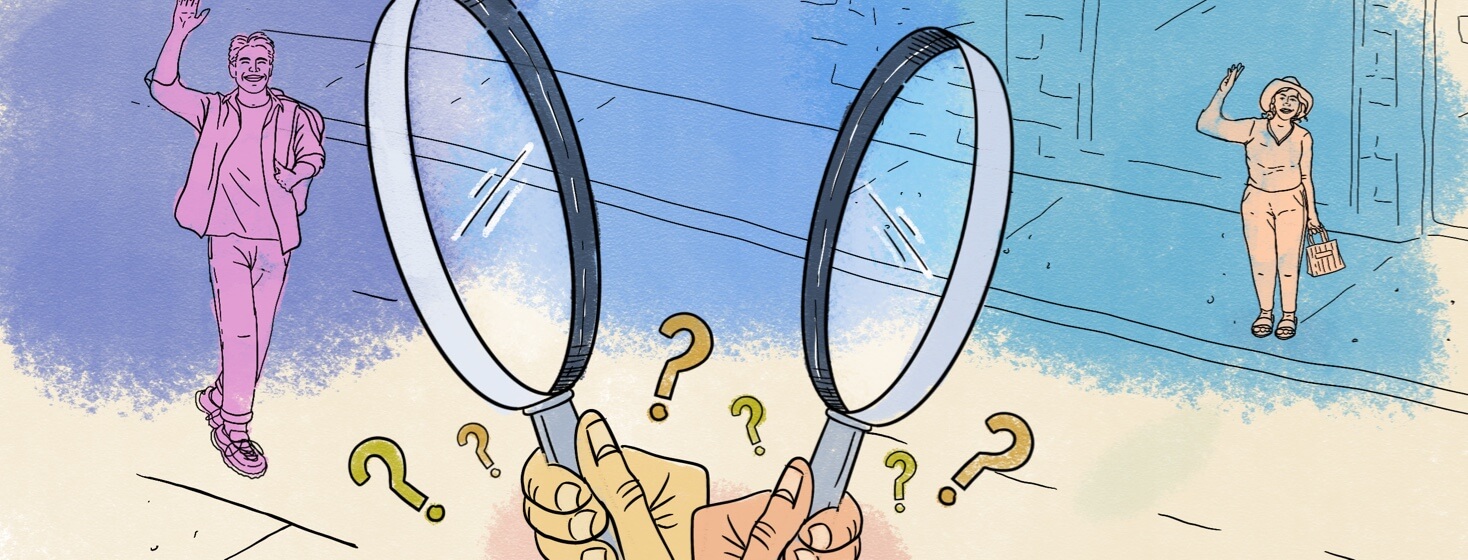What It’s Like to Live With Dry Age-Related Macular Degeneration
Age-related macular degeneration is the leading cause of vision loss in people over age 55. There are 2 types: wet and dry. The dry form of age-related macular degeneration (AMD) is by far the more common type. In fact, up to 9 out of 10 people with AMD have the dry type.1
Unfortunately, there is no cure and few ways to slow the progression of dry AMD. The limited treatment options and life changes that vision loss can bring can cause frustration and limit normal life.1,2
Vision changes at each stage of dry AMD
There are 4 stages of AMD, and in the early stages there may be no vision changes that impact a person’s life. However, later stages gradually cause vision loss that makes daily tasks like dressing, bathing, reading, cooking, and driving hard.1,2
The type of changes that may appear at each stage of AMD include:1
- Subclinical – There are not yet visible, physical changes to the eye, but people may notice their eyes do not adjust to the dark as easily.
- Early-stage – There is no vision loss yet, but your eye doctor can see physical changes to the eye during a regular eye exam.
- Intermediate-stage – Many people lose some vision by this stage, but some may still have no symptoms. Your eye doctor will be able to see more signs of eye damage.
- Late-stage – Vision loss gets worse and decreases quality of life, especially if the person becomes blind.
Symptoms of dry AMD
One study found 35 signs, symptoms, and impacts of dry age-related macular degeneration. Half of all people in the study reported the most bothersome symptoms of dry AMD to be:2
- Blurred vision
- Loss of central vision or a blind spot in the center of your vision
- Problems seeing in low light
- Problems seeing contrasts or colors looking washed out
- Poor depth perception
- Visual hallucinations
- Straight lines looking wavy
- Light flashes or floaters
- Headache
- Dry eye or itchy eye
- Eye strain
Studies show that blurred vision is the symptom most often reported, regardless of the person’s stage of AMD. All the symptoms of AMD gradually get worse, slowly eroding quality of life.2
How dry AMD affects quality of life
The symptoms of dry age-related macular degeneration impact daily life in a variety of ways mentally and physically, such as:2
- Increases dependency on others
- Problems recognizing faces
- Problems reading, driving, or working on a computer
- Difficulties with activities of daily living like bathing, dressing, and cooking
- Loss of mobility and less exercise
- Fewer social activities and isolation
- Embarrassment
- Falls and accidents
- Loss of confidence
The degree to which daily life is impacted tends to get slowly worse, so that a person’s routines and social life change as dry AMD progresses to the advanced stage. This contrasts with wet AMD, which tends to get worse quickly. The amount someone’s life is impacted varies widely, since some people may have better vision in one eye than another.3
If the person is still working, job loss due to less productivity and financial difficulties are also common. Some people find it distressing to have to wear glasses if they haven’t before.2
Stress, fear, and anxiety about what the future holds is often reported by people when they are diagnosed with dry AMD. Mourning the loss of a former self, social isolation, and difficulties seeing make depression particularly common as vision worsens in later stages.2,3
Studies also show that people with dry age-related macular degeneration are less satisfied with their doctors.2
Coping strategies for people with dry AMD
Many people have not heard of age-related macular degeneration until they are diagnosed with the condition. Therefore, shock and fear of the unknown often follow, with many expressing surprise that there’s no treatment. However, many people cope by educating themselves about AMD using the internet, family, friends, and peer support groups.3
Other ways that people with dry AMD report managing their vision changes include:3
- Planning to read in short bursts of a few minutes to reduce eye strain
- Driving only on familiar roads only during the day, and avoiding heavy traffic
- Once no longer driving, planning shopping trips more carefully
- Learning to use public transportation and ride share services, where available
- Hiring a housekeeper or lawn service
- Asking friends to read menus and signs when out together
- Carrying a magnifier at all times
- Color-coding household items to make them easier to identify
- Preventing falls by being extra careful on stairs or avoiding stairs and staying on paths and sidewalks rather than walking across uneven ground
Practicing self-care can also help people with dry AMD feel more in control. Suggestions for self-care include:2,3
- Checking your Amsler grid as your doctor prescribes and quickly alerting them to any vision changes you have
- Getting regular eye exams to track AMD’s progress
- Eating a diet rich in antioxidants and low in fat
Finally, many people find that slowing down and sticking to routines helps them manage poor vision. For instance, cooking recipes you know by heart prevents the need to read instructions. Placing things in the same place in your home prevents you from bumping into furniture or having to find items. Taking activities more slowly allows you to look harder or look many times to spot objects in your path.3

Join the conversation